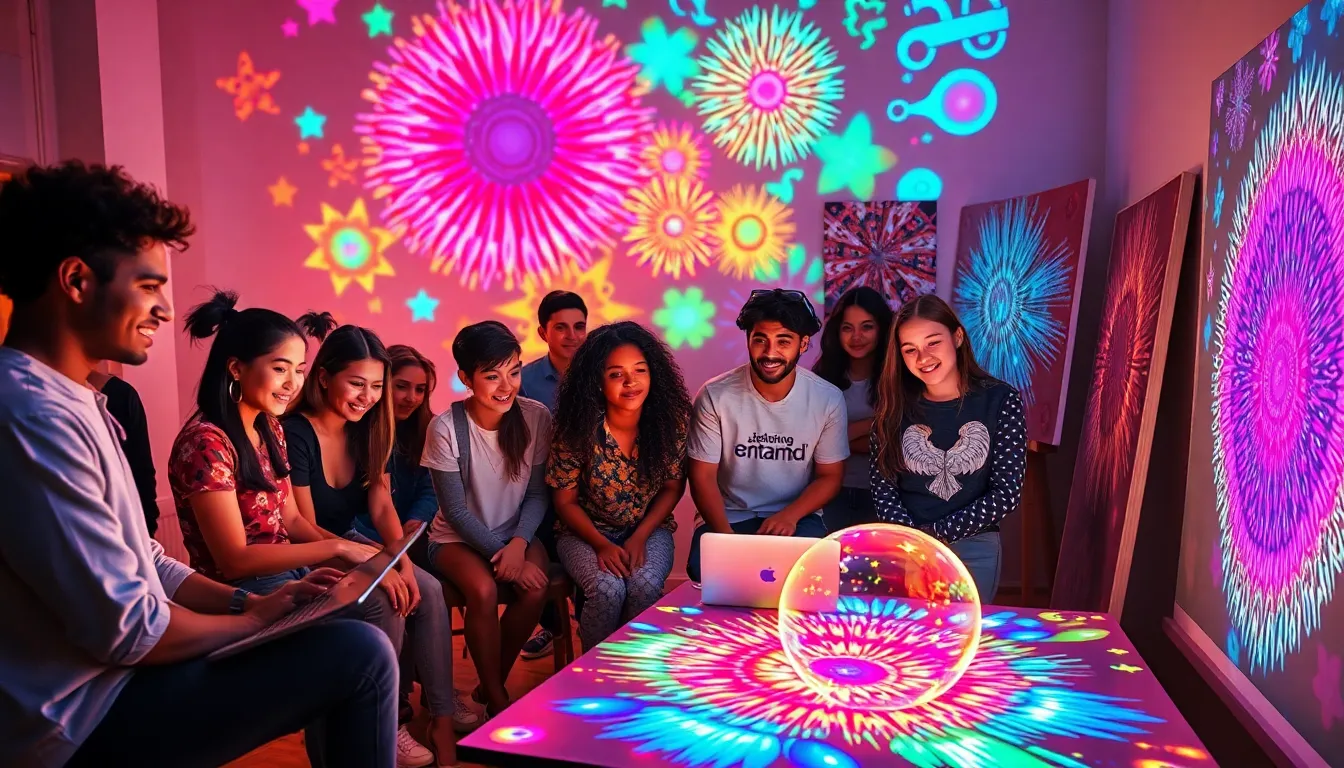In a world where creativity knows no bounds, projection mapping has emerged as the dazzling star of visual storytelling. Imagine transforming mundane walls into vibrant canvases that dance with light and color. Sounds like magic, right? Well, it’s not just for the pros anymore. With free projection mapping software, anyone can unleash their inner Picasso and bring their ideas to life without breaking the bank.
Table of Contents
ToggleOverview of Free Projection Mapping Software
Free projection mapping software offers tools for creating engaging visual experiences without incurring high costs. Various programs provide features that appeal to beginners and experienced users alike. These software applications enable users to project images and animations onto irregular surfaces, enhancing the storytelling element of their presentations.
Among the options available, VPT (Video Projection Tool) stands out for its user-friendly interface and real-time capabilities. This software allows users to manipulate 3D objects and adjust content on the fly, making it suitable for live performances. Another noteworthy choice is Blender, known for its robust 3D modeling features, which users can leverage for intricate projection mapping projects.
MadMapper also deserves mention as it combines simplicity and powerful functionality. Creators can efficiently map videos onto surfaces and synchronize sound to visuals. Meanwhile, Resolume Avenue serves as a professional-grade choice, offering advanced features for those with more complex requirements.
Applications like Lightform offer an innovative approach with their dedicated hardware and software combination. This solution streamlines the mapping process significantly. Users can scan and recognize surfaces, dramatically reducing the time spent on setup.
Each software option mentioned provides unique capabilities tailored to different user needs. An array of tutorials and community forums supports beginners, facilitating easier learning. By exploring these tools, individuals can fully realize their creative aspirations in projection mapping without needing substantial financial resources.
Benefits of Using Free Projection Mapping Software


Free projection mapping software offers various significant benefits. Individuals enjoy creative freedom without incurring high costs, fostering innovation and exploration in visual storytelling.
Cost-Effectiveness
Cost-effectiveness stands out as a primary advantage. Users access high-quality tools without financial barriers. Free software allows experimentation with projection mapping techniques without the risk of financial loss. Programs like VPT and Blender deliver professional results, enhancing visual presentations without requiring a budget for expensive licenses. Saving on software costs enables users to allocate resources for hardware or additional creative projects. Moreover, this accessibility fosters collaboration and community, as budget-friendly options encourage shared learning and experimentation among peers.
Accessibility for Beginners
Accessibility for beginners plays a crucial role. Intuitive interfaces simplify the learning curve for those new to projection mapping. Software like MadMapper provides streamlined features that make it easy to create stunning visuals. Beginners benefit from user-friendly tutorials and community support, which enhances confidence and skills. Programs often include step-by-step guides and forums, enabling users to seek assistance and share techniques. With free options available, anyone can start mapping right away, encouraging artistic exploration and creativity. This initial ease of access empowers newcomers, contributing to the growth of projection mapping as an engaging art form.
Popular Free Projection Mapping Software Options
Various free projection mapping software options provide creative tools for visual storytelling. Such software assists users in transforming surfaces into engaging displays, catering to both beginners and professionals.
Software 1: VPT (Video Projection Tool) – Description and Features
VPT stands out for its intuitive interface and real-time capabilities. Users appreciate the ease of creating complex projections without a steep learning curve. The software supports multiple video formats, enhancing flexibility in design. Additionally, built-in mapping features allow precise alignment of visuals onto surfaces. Regular updates improve functionality, ensuring users receive the latest tools for their projects. A dedicated community provides extensive support and tutorials, making VPT a go-to option for those pursuing projection mapping.
Software 2: Blender – Description and Features
Blender excels as a comprehensive 3D modeling software, making it suitable for projection mapping. Its powerful features empower users to create intricate animations and designs. The render engine delivers high-quality visuals that enhance projection outcomes. Users can leverage various plugins specifically designed for projection mapping, increasing its versatility. Extensive online resources, including tutorials and forums, facilitate learning for new users. Flexibility in project customization allows artists to explore their creative potential.
Tips for Getting Started with Projection Mapping
Understanding the basic elements of projection mapping significantly enhances the creative process. First, select the right software based on specific project needs. VPT is ideal for beginners because of its user-friendly interface, while Blender offers advanced features for those with more experience.
Next, familiarize yourself with the interface of the chosen software. Taking the time to explore tutorials facilitates smoother navigation and usage, enabling users to maximize the software’s capabilities. Finding community forums or support groups can provide additional assistance and insight.
Planning the project is essential. Users should sketch out their ideas and consider the surfaces they plan to project onto. A clear vision can streamline the mapping process and help prevent common pitfalls.
Experimentation plays a crucial role in refining skills. Trying different techniques and effects allows users to discover their style and enhance their storytelling ability. Users often find that practice leads to more creative and engaging outcomes.
Testing the projections on the actual surfaces helps in perfecting alignment and visual quality. Adjusting the position and scale based on real-world trials ensures the final product meets expectations.
Utilizing feedback from peers can also improve projects significantly. Engaging with other creators fosters collaboration and encourages diverse perspectives. Sharing work-in-progress can lead to valuable suggestions and ideas for improvement.
Remember, persistence is key in mastering projection mapping. Continually exploring new tools, techniques, and ideas can lead to innovative projects that push artistic boundaries.



